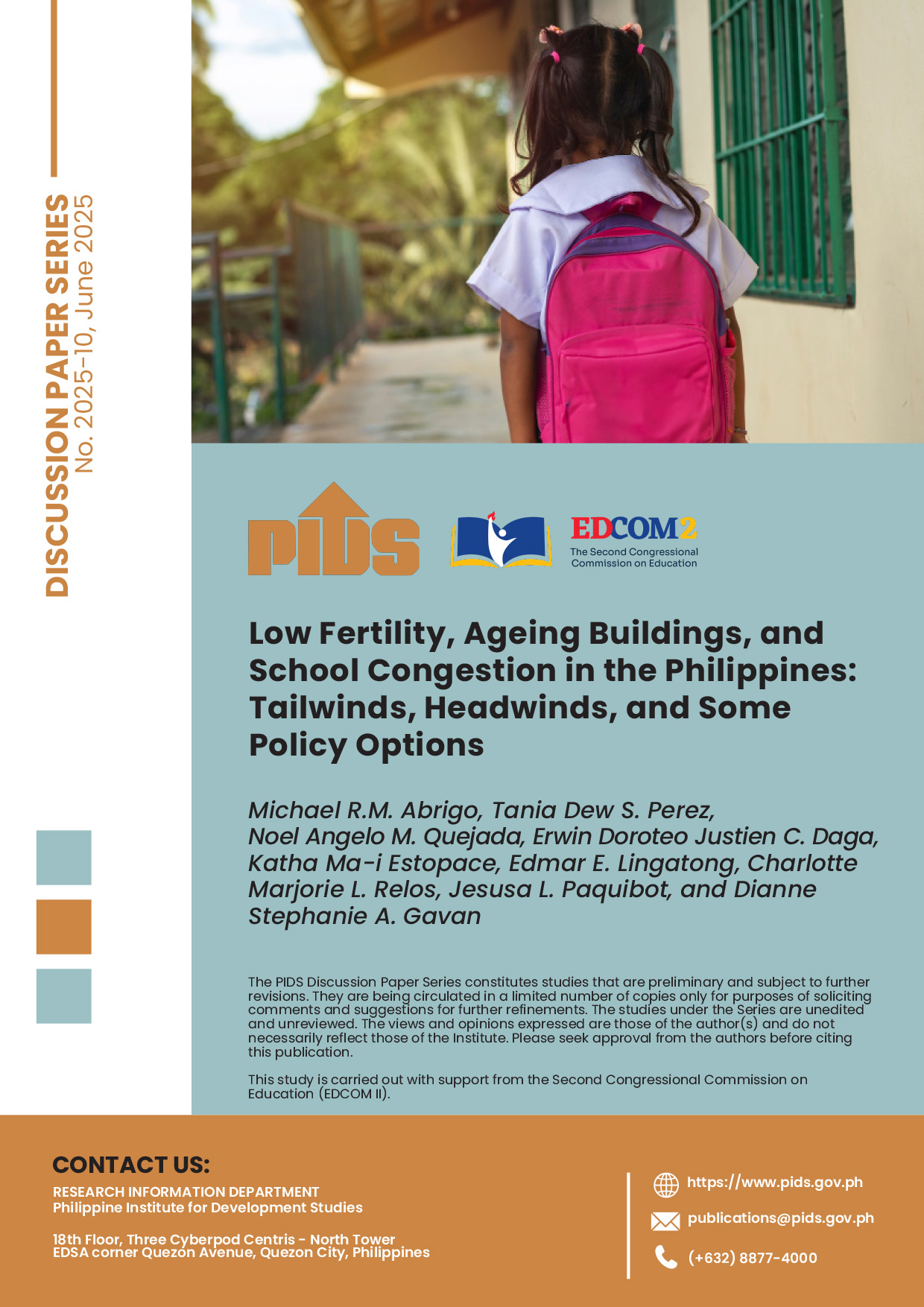The next Congress must prioritize the amendment of a law which allowed Manila to protect the rice sector by limiting the entry of cheap rice imports, a senior official of the National Economic and Development Authority (Neda) said on Monday.
Neda Deputy Director General Rosemarie Edillon said Republic Act (RA) 8178, or the Agricultural Tariffication Act, should be amended before the extension of the quantitative restriction (QR) on rice granted by the World Trade Organization (WTO) expires in July 2017.
While the QR on rice has temporarily given palay farmers a reprieve from the deluge of cheap imports, its extension has necessitated the grant of concessions that were detrimental to other farm sectors.
“July 2017 is less than two years away and when the new Congress begins its session, I suppose [the amendment of RA 8178] will have to be one of the first bills that should be filed and passed,” Edillon told the BusinessMirror in an interview.
After July 2017, the Philippines may no longer be allowed to enjoy the QR, as it has been over 20 years since the country joined the WTO. The Philippines officially became a member of the WTO on January 1, 1995.
The country’s accession to the WTO means it agreed to liberalize trade for all commodities, including rice—the country’s staple.
Over time, other countries, like Japan and South Korea, were no longer allowed to impose the QR, allowing rice imports to arrive freely in their markets, provided traders would pay the corresponding tariff and duties.
Edillon said Manila’s decision to retain the protection for rice is due to the fact that Filipinos consider it irreplaceable as it is a cheap everyday food.
The exemption also aims to protect farmers, many of whom could not compete in the international market. Only farmers living in plains like those in Central Luzon will be able to compete with international rice sellers.
“What we’re saying is that protection doesn’t have to be in the form of QR. In fact, if you replace QR with tariffs, the money could be used to modernize our agriculture,” Edillon said.
“The government could help farmers currently planting rice in nonsuitable areas to shift to cultivating other more
profitable crops. It is a win-win proposition,” she added.
The Neda and the World Bank said that in lieu of the QR, the Philippines can set rice tariffs at 35 percent to 40 percent, or even 30 percent, when the WTO waiver expires in July 2017.
The World Bank said this is the “most acceptable” thing to do since assigning a tariff on rice and gradually reducing it will encourage free trade and result in the decline in local rice prices.
The Washington-based multilateral development bank said poor Filipinos, who allocate 20 percent of their household budgets for rice, are the ones who suffer the most when the price of the staple goes up.
Retaining the QR and the government’s control over the country’s rice trade did not result in 100 rice self-sufficiency—a campaign promise made by President Aquino. Farmers have remained poor and consumers are forced to buy expensive rice. This despite allocating around 65 percent of the budget of the Department of Agriculture and related government- owned and-controlled corporations for rice production since the 1960s. Government efforts to boost output were fraught with low-quality investments and few support mechanisms.
“Decades of substantial budget outlays, even when supported by QR on rice imports with high in-quota tariffs and government control over rice trade by the National Food Authority, did not advance the goal of rice self-sufficiency,” the World Bank said.
“Instead, rice supply has been inadequate and kept domestic rice prices artificially high relative to world prices,” it added.
Philippine Institute for Development Studies senior fellow Roehlano Briones said the government’s rice spending reached P37.44 billion in 2012, almost half of the government’s total agriculture spending in that year. Data showed that the government spent a total of P62.64 billion for agriculture-related programs and projects. This was significantly higher than the P14.38 billion spent in 2005.
Also, government spending for other crops like corn only amounted to P951 million in 2012; high-value crops, P1.63 billion; coconut, P2.08 billion; livestock, P2.72 billion; and 3.308 billion for fisheries.//
Neda Deputy Director General Rosemarie Edillon said Republic Act (RA) 8178, or the Agricultural Tariffication Act, should be amended before the extension of the quantitative restriction (QR) on rice granted by the World Trade Organization (WTO) expires in July 2017.
While the QR on rice has temporarily given palay farmers a reprieve from the deluge of cheap imports, its extension has necessitated the grant of concessions that were detrimental to other farm sectors.
“July 2017 is less than two years away and when the new Congress begins its session, I suppose [the amendment of RA 8178] will have to be one of the first bills that should be filed and passed,” Edillon told the BusinessMirror in an interview.
After July 2017, the Philippines may no longer be allowed to enjoy the QR, as it has been over 20 years since the country joined the WTO. The Philippines officially became a member of the WTO on January 1, 1995.
The country’s accession to the WTO means it agreed to liberalize trade for all commodities, including rice—the country’s staple.
Over time, other countries, like Japan and South Korea, were no longer allowed to impose the QR, allowing rice imports to arrive freely in their markets, provided traders would pay the corresponding tariff and duties.
Edillon said Manila’s decision to retain the protection for rice is due to the fact that Filipinos consider it irreplaceable as it is a cheap everyday food.
The exemption also aims to protect farmers, many of whom could not compete in the international market. Only farmers living in plains like those in Central Luzon will be able to compete with international rice sellers.
“What we’re saying is that protection doesn’t have to be in the form of QR. In fact, if you replace QR with tariffs, the money could be used to modernize our agriculture,” Edillon said.
“The government could help farmers currently planting rice in nonsuitable areas to shift to cultivating other more
profitable crops. It is a win-win proposition,” she added.
The Neda and the World Bank said that in lieu of the QR, the Philippines can set rice tariffs at 35 percent to 40 percent, or even 30 percent, when the WTO waiver expires in July 2017.
The World Bank said this is the “most acceptable” thing to do since assigning a tariff on rice and gradually reducing it will encourage free trade and result in the decline in local rice prices.
The Washington-based multilateral development bank said poor Filipinos, who allocate 20 percent of their household budgets for rice, are the ones who suffer the most when the price of the staple goes up.
Retaining the QR and the government’s control over the country’s rice trade did not result in 100 rice self-sufficiency—a campaign promise made by President Aquino. Farmers have remained poor and consumers are forced to buy expensive rice. This despite allocating around 65 percent of the budget of the Department of Agriculture and related government- owned and-controlled corporations for rice production since the 1960s. Government efforts to boost output were fraught with low-quality investments and few support mechanisms.
“Decades of substantial budget outlays, even when supported by QR on rice imports with high in-quota tariffs and government control over rice trade by the National Food Authority, did not advance the goal of rice self-sufficiency,” the World Bank said.
“Instead, rice supply has been inadequate and kept domestic rice prices artificially high relative to world prices,” it added.
Philippine Institute for Development Studies senior fellow Roehlano Briones said the government’s rice spending reached P37.44 billion in 2012, almost half of the government’s total agriculture spending in that year. Data showed that the government spent a total of P62.64 billion for agriculture-related programs and projects. This was significantly higher than the P14.38 billion spent in 2005.
Also, government spending for other crops like corn only amounted to P951 million in 2012; high-value crops, P1.63 billion; coconut, P2.08 billion; livestock, P2.72 billion; and 3.308 billion for fisheries.//












